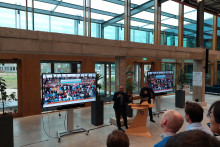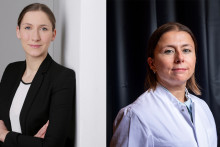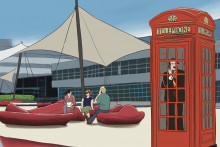The number of international students at Dutch universities has risen again, according to new statistics published this week. And if the forecasts are correct, the growth is set to continue.
For certain numerus fixus programmes, international students are supplanting Dutch prospective students. Furthermore, there is a lack of housing and many students cannot find a room. So cities and universities are calling for help.
Own plan
But Minister Dijkgraaf seems to be in no hurry. He has withdrawn a bill proposed by his predecessor (‘Language and accessibility’), even though it had almost crossed the finish line. All that was left was the vote in the Senate. The minister will not put forward his own plan until early 2023.
The universities are unhappy that they are having to wait so long before they are able to do something, but Dijkgraaf has taken an informed decision. 'I can fill up the toolkit and then every farmer can patrol their own section of the dike, but that doesn’t mean that the dike will be well protected', the minister said last June in an interview with HOP. “We need to have a national strategy when it comes to internationalisation: what do we want to achieve together? Such a strategy is lacking right now.”
Instruments
The universities certainly want more tools in their toolkit. They want permission to make a distinction between European and non-European students, so that they can limit one group without affecting the other. That would benefit 11 study programmes, such as Aerospace Engineering and Mechanical Engineering, they argued at a press conference.
They also want to make a distinction between a Dutch-language track for all the Dutch native speakers and an English-language track, for which a numerus fixus applies. You then maintain the number of places for Dutch students. Currently, 13 study programmes need such a measure.
Could there be more? Pieter Duisenberg, President of Universities of the Netherlands takes the view that more study programmes would probably want to make use of these options.
Own section of dike
But then you have the situation that Dijkgraaf wants to avoid: that everyone protects only their own section of the dike. The reasoning of the government is that there are major shortages on the labour market and that the Netherlands has need of the talents of foreign students. Moreover, shrinking regions would be delighted to welcome foreign students who give the economy a boost. So Dijkgraaf is presumably looking for his solution in another area. But which one?
One of the potential solutions is to change some of the universities of applied sciences into practice-based universities. Then some of the students at research universities could go to universities of applied sciences, thereby spreading the workload. An additional benefit of that is reducing the predicted fall in the number of students at universities of applied sciences. That possibility has been mooted several times before.
A single institution
But there is another option. Dijkgraaf feels that higher education ought to operate as a single institution, so as to be able to distribute the work more effectively. You could also do that at the time of enrolment for a study programme.
If those foreign students cannot get a place in, say, Amsterdam or Delft, just send them to study programmes in other cities. That is what used to happen with the Medicine study programme, for example. The prospective doctors did not always get into their first-choice university and sometimes had to go to another city.
If Dijkgraaf wants to attract more foreign talent to the Netherlands even though certain study programmes are bursting at the seams, he will have to come up with something to distribute those students across the country. The solution could be a one-stop shop for all enrolments.







